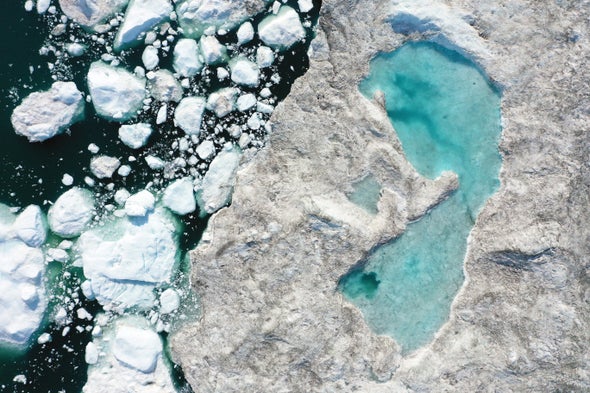by CHELSEA HARVEY

Melt has accelerated over recent decades, contributing to sea level rise
The world’s frozen places are shrinking—and they’re disappearing at faster rates as time goes by.
In the 1990s, the world was losing around 800 billion metric tons of ice each year. Today, that number has risen to around 1.2 trillion tons.
Altogether, the planet lost a whopping 28 trillion tons of ice between 1994 and 2017.
That’s according to a new study, published today in the journal The Cryosphere, calculating all the ice lost around the globe over the last few decades.
It’s the first to provide a truly global analysis of the planet’s vanishing ice, the authors say. It accounts for both the Greenland and Antarctic ice sheets, Arctic and Antarctic sea ice and mountain glaciers all over the world.
The research combines measurements from a variety of sources—mainly satellite studies, as well as on-site observations and numerical models.
The findings are stark. Ice is steadily disappearing across much of the world, and a majority of the losses are driven by climate change.
Rising air temperatures are causing mountain glaciers to shrink, from the European Alps to the Himalayas of Asia to the Andes in South America. The study suggests that mountain glaciers worldwide have lost nearly 10 trillion tons of ice since the 1960s, with the losses speeding up over time. Nearly 6 trillion tons of ice have disappeared since the 1990s alone.
The Greenland and Antarctic ice sheets also have shed huge volumes of ice. Since the 1990s, Antarctica has lost more than 2.6 trillion tons and Greenland has lost nearly 4 trillion.
In Antarctica, most of these losses stem from marine-terminating glaciers, or glaciers that back up to the ocean. Recent studies have found that warm ocean currents are increasingly melting these glaciers from the bottom up, causing them to pour more ice into the sea.
Scientists still are investigating the sources of the warm water, but some experts believe climate change is altering ocean currents in ways that may be driving more melting.
Scientific American for more
